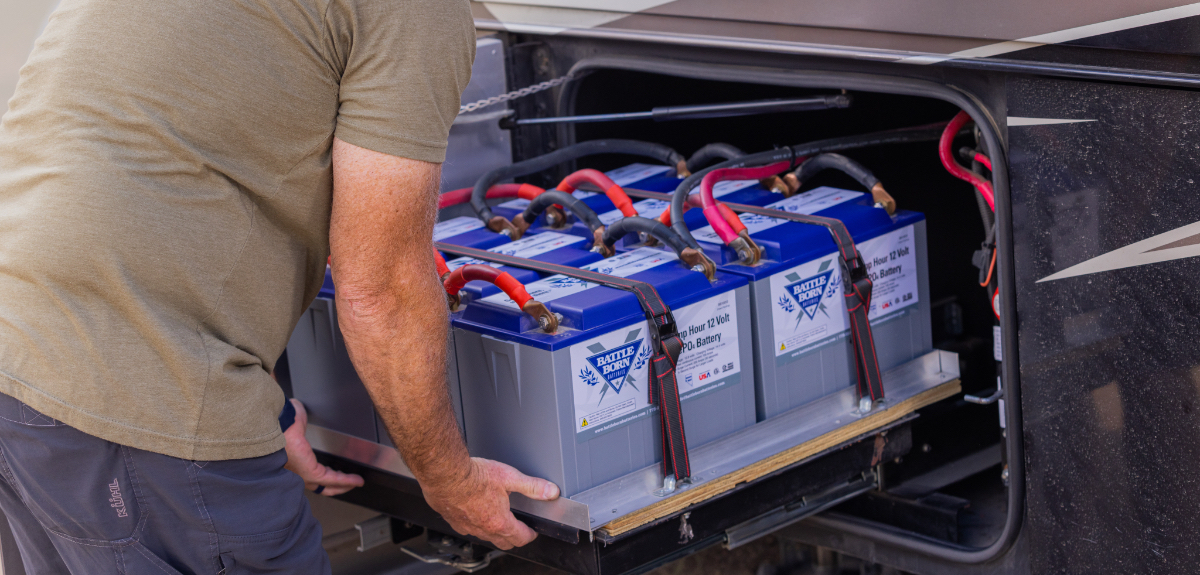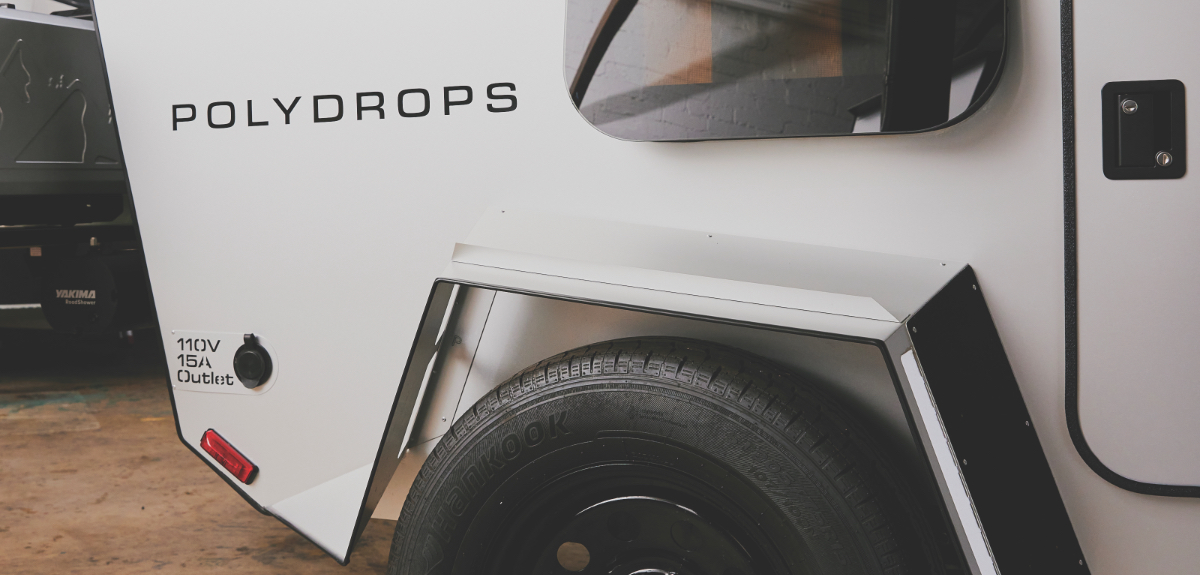How to Check If You’ve Overloaded Your Motorhome Tires
Image Caption:
Even though we’ve been lectured for decades about the need to weigh our motorhomes – and that we should not just assume or hope we haven’t exceeded load ratings – the importance of a trip to a certified scale can’t be overemphasized.
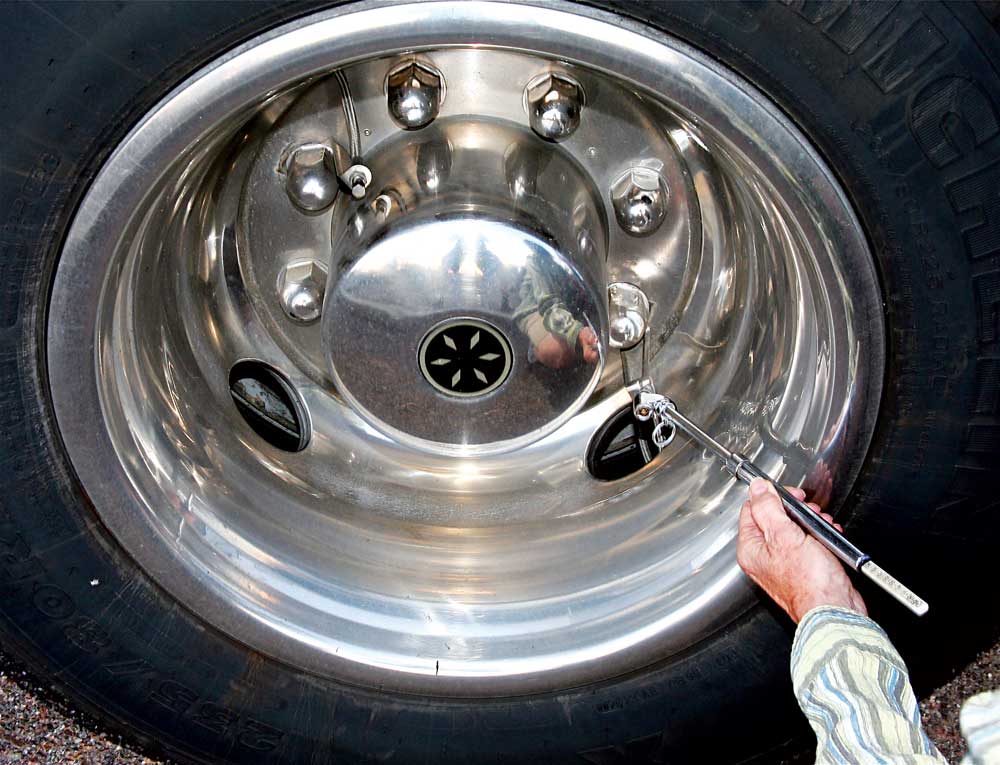
We usually don’t realize how much weight we are adding and we may have even started out with a problem: an unbalanced coach. While a motorhome owner may take comfort in meticulously maintaining the chassis manufacturer-recommended tire pressures, overloading invalidates those pressures. The only insurance against tire overloading is to determine the load on each tire or set of tires on a certified scale.
Chassis manufacturers’ load ratings and tire inflation recommendations are based on balanced loads.
A MOTORHOME’S MOST VULNERABLE COMPONENT USUALLY IS ITS TIRES, WHICH ARE SUBJECT NOT ONLY TO OVERLOADING BUT TO UNDERINFLATION.
Only one tire or set of dual tires may be overloaded and underinflated, but it only takes one to cause a big problem, and collateral damage during a blowout is always a concern.
How to Prepare Your Motorhome Tires
With the coach loaded for travel, the ideal approach is to locate a set of individual wheel scales, possibly at an RV rally where the RV Safety & Education Foundation offers a weighing program. Short of that, look for a truck axle scale, a short scale that weighs one axle at a time.
If neither is available, a commercial platform scale will suffice if it has level aprons that allow you to weigh one wheel or dual set at a time without throwing the coach off level. The procedure is to weigh one wheel or dual set after positioning the remaining three slightly off the edge of the scale. This will take a bit of time, and commercial scales often are busy; it’s good to ask the operator to identify a time when traffic is light.
After you’ve weighed each wheel position, weigh each axle or the entire coach (platform scale) to give you an idea of the margin of error in the individual wheel weight numbers you’ve acquired. Weigh your dinghy vehicle as well. Compare the results with your chassis ratings, usually found on a sticker in the left front of the motorhome:
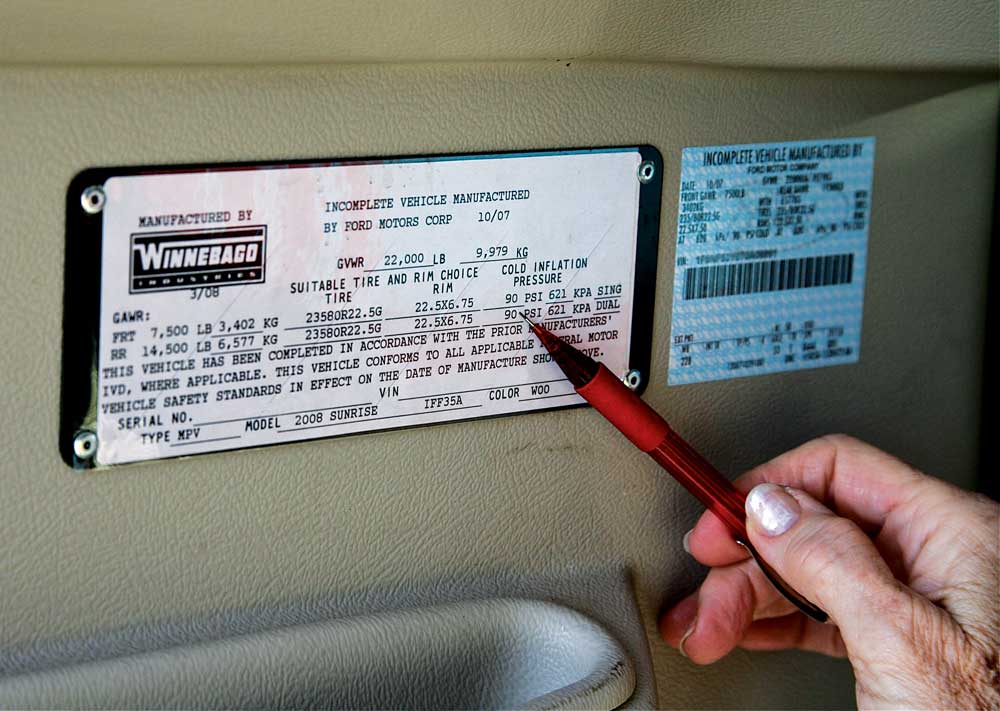
GVWR
Gross Vehicle Weight Rating: The chassis manufacturer’s maximum allowable weight of the motorhome as well as its contents.
GAWR
Gross Axle Weight Rating: The maximum allowable weight on the front or rear axle with all content loaded.
GCWR
Gross Combination Weight Rating: Maximum allowable weight of fully loaded coach and towed vehicle.
If you find one wheel position on a given axle heavier than the other (usually the rear), inflate all tires on that axle for the heavier weight, using ratings molded on the tire sidewalls or a load-inflation table provided by the tire manufacturer.
Example:
Right rear dual set 7,500 lbs
Left rear dual set 7,950 lbs
Total 15,450 lbs
Rear GAWR listed by coach manufacturer 14,500 lbs
Inflation pressure recommended by coach manufacturer 90 psi (cold)
In the above example, the coach manufacturer is recommending 90 psi as adequate tire pressure for loading up to the rear GAWR (maximum rear load rating). This assumes that the load is balanced perfectly (7,250 pounds for each set of duals).
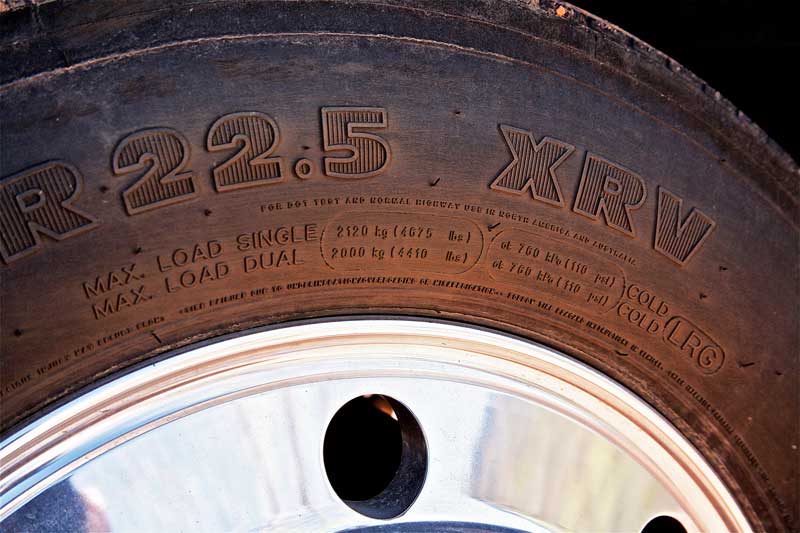
If either or both sets of rear duals is overloaded, which occurs in this case, 90 psi is not adequate. The tires should be inflated to the listings on the tire sidewalls: 110 psi in this case, which is the minimum pressure for the tire’s maximum load (molded on the tire sidewall). This tire is rated to carry 4,410 pounds (cold) at 110 psi, which would take care of the tire overload. But the rear GAWR overload should be corrected, to avoid potential axle, spring and brake problems.
Such is the exercise that can help us be safe on the highway.

